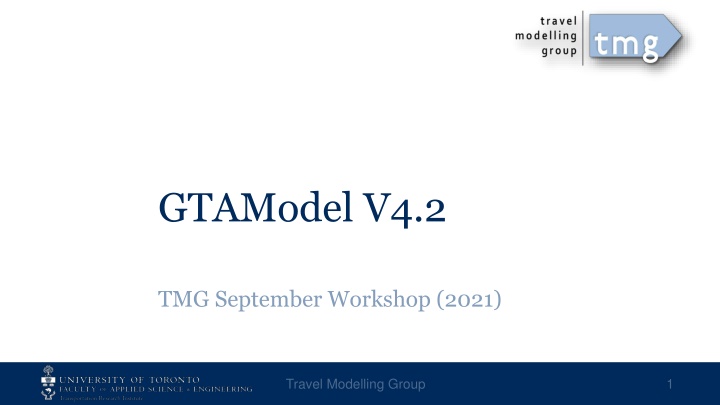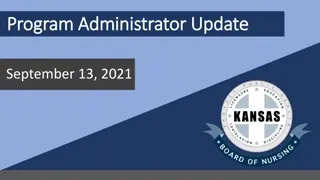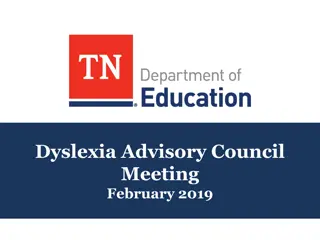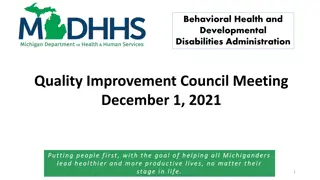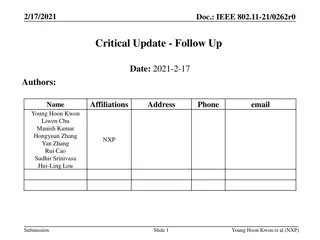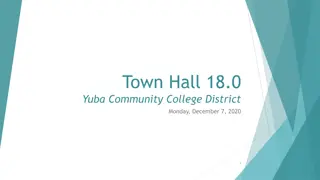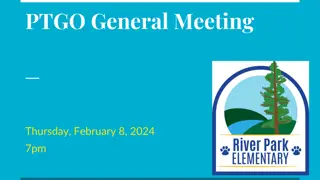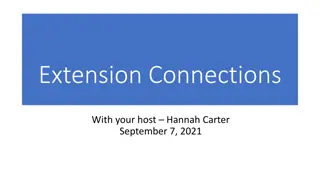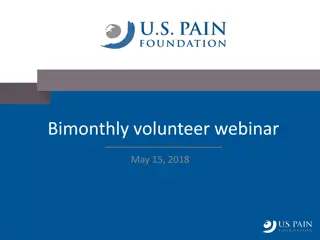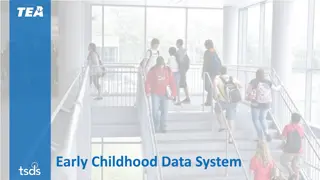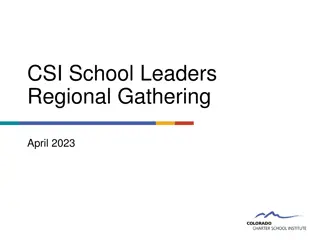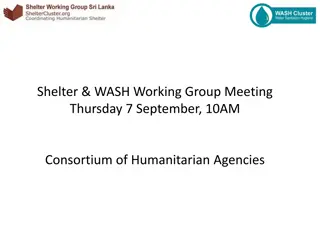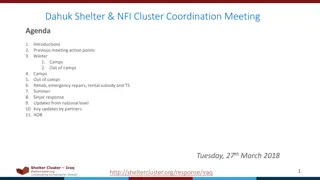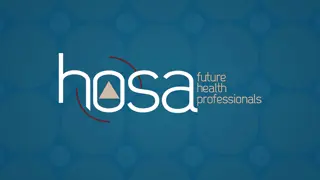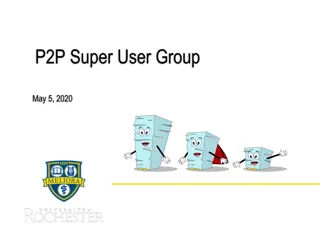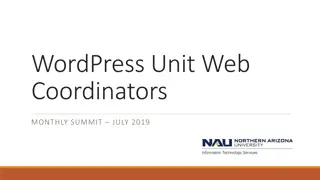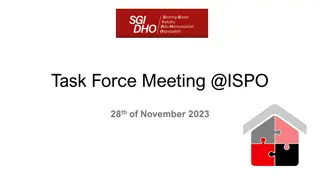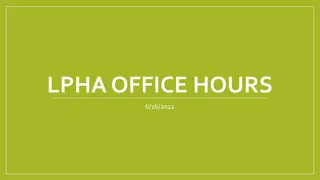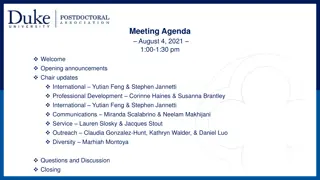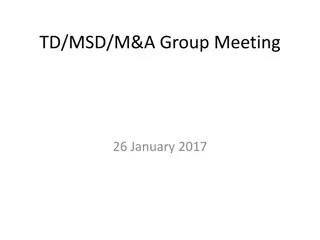GTAModel v4.2 Overview and Updates
This document provides an overview of GTAModel v4.2, including initial network assignment, load data analysis, access station modeling, mode choice considerations, and more. It highlights the new features and enhancements such as updated network assignments, transit models, freight modeling, and time periods classification. The document also discusses the tools and methodologies used for travel modeling and simulation, focusing on the latest advancements in the field.
Download Presentation

Please find below an Image/Link to download the presentation.
The content on the website is provided AS IS for your information and personal use only. It may not be sold, licensed, or shared on other websites without obtaining consent from the author.If you encounter any issues during the download, it is possible that the publisher has removed the file from their server.
You are allowed to download the files provided on this website for personal or commercial use, subject to the condition that they are used lawfully. All files are the property of their respective owners.
The content on the website is provided AS IS for your information and personal use only. It may not be sold, licensed, or shared on other websites without obtaining consent from the author.
E N D
Presentation Transcript
GTAModel V4.2 TMG September Workshop (2021) Travel Modelling Group 1
Documentation Please visit http://tmg.utoronto.ca/doc for the latest documentation for XTMF, GTAModel, and the TMGToolbox. Travel Modelling Group 2
GTAModel V4.2 Overview Initial Network Assignment Load LoS Data Compute Access Station Models Compute Aggregate PoRPoW Compute Aggregate PoRPoS Load Household Assign Work/School Zones Assign Driver Licenses Assign Cars to Household TASHA Mode Choice External Model Network Assignment Airport Model Compute Next Iteration Freight Model Travel Modelling Group 3
Initial Network Assignment What s new in V4.2 Load LoS Data New parking cost model New Pearson Airport model Recalibrated Freight Model Updated 2016 Network with computed EROW speeds from GTFS Recalibrated Transit Assignment model with separated bus EROW Updated drive-access-transit parking capacities Updated NWS location choice formulation New Population synthesizer MetroPop Compute Access Station Models Compute Aggregate PoRPoW Compute Aggregate PoRPoS Load Household Assign Work/School Zones Assign Driver Licenses Assign Cars to Household TASHA Mode Choice External Model Network Assignment Airport Model Compute Next Iteration Freight Model Travel Modelling Group 4 4
Time Periods Time Period AM Mid Day PM Evening Overnight Start 6:00 AM 9:00 AM 3:00 PM 7:00 PM 0:00 AM End 9:00 AM 3:00 PM 7:00 PM 0:00 AM 6:00 AM Travel Modelling Group 5
Initial Network Assignment Network Assignment Load LoS Data Network Assignments are done in EMME 4.4 Road Assignment Generating a Fare-Based Hyper- network Transit Assignment Congested Fare-based Surface Transit Speed Updating Compute Access Station Models Compute Aggregate PoRPoW Compute Aggregate PoRPoS Load Household Assign Work/School Zones Assign Driver Licenses Assign Cars to Household TASHA Mode Choice External Model Network Assignment Airport Model Compute Next Iteration Freight Model Travel Modelling Group 6
Initial Network Assignment Road Assignment Load LoS Data All 5 time periods Background public transit demand Computed automatically Tolls for the 407 Upgraded to a multiclass assignment allowing for the assignment of freight Compute Access Station Models Compute Aggregate PoRPoW Compute Aggregate PoRPoS Load Household Assign Work/School Zones Assign Driver Licenses Assign Cars to Household TASHA Mode Choice External Model Network Assignment Airport Model Compute Next Iteration Freight Model Travel Modelling Group 7
G Fare-Based Hyper-network Y GY T Each transit operator is separated into a virtual plane Transfers are then modeled as links between the planes Created automatically based on a fare template file Allows for fare policy testing Properly models transfers Can include discounted transfers T T G T Travel Modelling Group 8
Transit Assignment with Surface Transit Speed Updating Recalibrated model in V4.2 with: Supports latest networks with TTF6, Bus EROW segments Exclusive right-of-way (EROW): stop- to-stop speeds for each segment STSU adjusts the bus and streetcar speeds on SROW segments Travel Modelling Group 9
Compute Access Station Models Drive Access Transit Tour-based logit Attractiveness varies as available parking changes Passenger Access Transit Trip-based logit model Passenger Egress Transit Trip-based logit model Travel Modelling Group 10
Tour-Based Access Station Choice - Example Driving to the Access Station Returning from the Access Station Travel Modelling Group 11
Computing PoR-PoW Separate models for each Occupation and Employment Status Doubly-constrained gravity model Uses an auto, transit, and distance based logit model for friction Travel Modelling Group 12
Computing PoR-PoS Base-year proportional update by zone Separate categories for elementary, high school, and university aged persons Travel Modelling Group 13
Assigning Work and School Zones Discrete zonal assignments Done per person independently Based on the corresponding pre- computed model Travel Modelling Group 14
Assign Driver Licenses Binary logit model Based on: Demographics Income level Population density of home Transit utility to work or school Distance to work or school Travel Modelling Group 15
Assign Cars to Household Ordered-logit model Based on: Number of Adults Number of Kids (<16) Number of Full-time workers Number of driver licenses 0, 1, 2, 3+ Household Income category Population density of home zone Job density of home zone Average distance to work for home zone Average transit utility to work for home zone Average auto travel time to work for home zone Travel Modelling Group 16
TASHA Generate projects Combine projects into a personal schedule and resolve conflicts Generate trip chains, awaiting mode assignments from Mode Choice Travel Modelling Group 17
Projects Separate schedules for different types of activity episodes Work School Other Market Household Other Household Market Each project is generated using the base year s observed episode rates Travel Modelling Group 18
Activity Episodes Purpose Start-time Duration Location Generated from observed TTS distribution rates Travel Modelling Group 19
Person Schedule Used to combine all projects If full-time employed work episodes are scheduled first otherwise school episodes Household level projects are scheduled next Followed by Other and Market Episodes are assigned locations as they enter the person schedule Travel Modelling Group 20
Time Prism Location Choice Used to generate the location of other, market, and work based business episodes Provides for a more feasible schedule as the destination choice-set is restricted by how far the person is able to travel by auto in the allotted schedule Example on next slide Travel Modelling Group 21
Time Prism Location Choice - Example 1 4 7 Final Origin Destination 3 2 6 5 Travel Modelling Group 22
Generate Trip Chains Generated from the person schedule Trips are generated to connect the activity episodes A home activity is added if they are able to travel to home and stay before going to their next activity for a given duration Trips are grouped from home to home sequences into trip chains Travel Modelling Group 23
Mode Choice Tour-Based Probit Model Household Level Constraints Intra-household passenger Multiple person categories Student Employed, by occupation Professional General Sales Manufacturing Unemployed non-student Travel Modelling Group 24
Auto (Driver) Limited number of vehicles in the household Must have a driver s license Cars must return home at the end of a trip chain Value of time based on each person s category Travel Modelling Group 25
Bicycle A bicycle must leave from and return to home at the end of the trip-chain Uses network based distances for intra-zonal travel Uses 2 ???? distance for intra-zonal travel to approximate the 6 Travel Modelling Group 26
Carpool Inter-household passenger Not taxi or vehicle for hire Value of time based on each person s demographic category Travel Modelling Group 27
Drive-Access Transit Value of time based on each person s category Gets a utility for each feasible access station Uses the expected level of service for access stations If the tour choses this mode a discrete station is chosen from the feasible stations for each household iteration Travel Modelling Group 28
Passenger Intra-Household Facilitated Trips Broken into 3 legs Driver to passenger To Passenger s Destination To Driver s Destination Household utility must be improved in order to be selected Not available if the potential passenger already has a vehicle Value of time based on the driver s person category Travel Modelling Group 29
Passenger Access / Egress Transit (PAT / PET) These modes does not require the facilitation by a household member, nor the allocation of a household auto. Travel Modelling Group 30
Rideshare Intra-Household Joint Trip Assigned if the tour s representative picks Auto Travel Modelling Group 31
Vehicle For Hire (VFH) Inter-household passenger This mode serves as a grouping for Taxi and Uber, Lift, and other Vehicle for Hire services. Travel Modelling Group 32
Walk-Access Transit Uses the integrated congested fare based transit network. Different fare perceptions based on the person s class Value of time based on each person s category Travel Modelling Group 33
Walk-All Way On network distances for inter- zonal trips Intra-zonal trips use: 2 ???? 6 to approximate the distance Travel Modelling Group 34
Mode Choice Algorithm Compute all feasible tours Compute tour-level utilities Get highest utility tours for both with auto and without Complete discrete stations choices Resolve the household to assign vehicles to tours and optimize household utility Find and apply passenger trips given from drivers currently on the road Find and apply passenger trips given from drivers currently at home Travel Modelling Group 35
External Model Trips are added in by building a demand matrix and then applying a factor to scale based future population divided by base year population Trips are separated into different modes to be applied to the appropriate demand matrices Travel Modelling Group 36
Airport Model Updated in V4.2 Generates both auto and transit demand Splits demand by time period, GTHA residents / visitors, and business / vacation Has origin/destination location and mode choice models Fare sensitive Results are added back into the network demand matrices Travel Modelling Group 37
Freight Model Recalibrated using 2016 cordon counts in V4.2 Three 3-step models for: Light Medium Heavy Special generators for: Pearson International Airport CN Brampton Intermodal Yard CP Vaughan Intermodal Yard Travel Modelling Group 38
Outputs AssignedNetworks Auto and Transit NWP s with assignment results Demand LoS Matrices Microsim Households Persons Trips Trip modes Trip stations Facilitate passenger Travel Modelling Group 39
Microsim - Households Household ID Home Zone Expansion Factor Number of Persons Dwelling Type Number of Vehicles Income Class Travel Modelling Group 40
Microsim - Persons Household ID Person ID Age Sex License Transit Pass Ignore this for version 4.2 Employment Status Occupation Free parking at work Ignore this for version 4.2 Student Status Work Zone School Zone Weight (expansion factor) Travel Modelling Group 41
Microsim - Trips Household ID Person ID Trip ID Origin Activity Origin Zone Destination Activity Destination Zone Weight (expansion factor) Travel Modelling Group 42
Microsim Trip Modes Household ID Person ID Trip ID Mode Departure time Arrival Time Weight (number of times chosen) * Times are in minutes from midnight Travel Modelling Group 43
Microsim Trip Stations Household ID Person ID Trip ID Station ID To / From Transit auto2transit transit2auto Weight (number of times chosen) Mode (New in XTMF 1.8+) PAT/PET/DAT * Times are in minutes from midnight Travel Modelling Group 44
Microsim Facilitate passenger Household ID Passenger Person ID Passenger Trip ID Driver Person ID Driver Trip ID -1 if the driver facilitated the trip by going from home and returning back Weight (number of times chosen) Travel Modelling Group 45
MetroPop A new population synthesizer Allows you to generate new synthetic households and persons without going through TMG Based on a hybrid IPU and Monte Carlo simulation Runs in 6 to 20 minutes, server to laptop for a 2016 population Able to generate inputs for consumption by either GTAModel or GGHM Does not require an installation to setup, just copy and run on Windows 7+. Travel Modelling Group 46
End Remarks Travel Modelling Group 47
